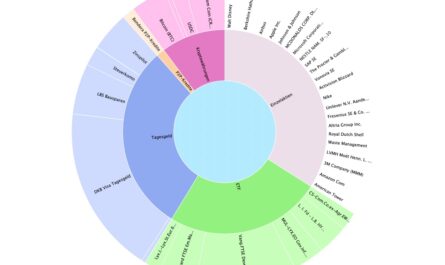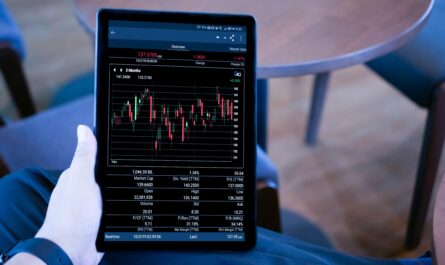The dividend strategy is a popular strategy among equity investors when investing in individual shares. Investors mainly invest in shares of companies that make regular profit distributions to their shareholders. In addition to broadly diversified ETFs, we also predominantly buy dividend stocks in order to earn a monthly, passive additional income. However, this strategy not only has advantages, but also disadvantages, which we would like to look at in more detail in this article.
Advantages of the dividend strategy
#1 Stable source of income
We have already indirectly mentioned the most important advantage for us in the introduction: Those who pursue the dividend strategy generally want to build up an additional, monthly and above all passive income. The regular inflows from companies can be really motivating, especially when there is a negative mood or even a bear market on the market as a whole and dividends are rising regularly even without additional purchases via a savings plan.
Dividends can also be used to buy a company’s products in the long term: For example, a BigMac meal from McDonalds every quarter, a caramel macchiato from Starbucks every month or a smartphone tariff from Deutsche Telekom. Your investment gives you free products for life, so to speak.
#2 Long-term growth
Dividend payments can grow considerably in the long term – especially if you invest regularly over decades, regardless of share prices, using a savings plan. Companies that pay dividends often increase their payouts over time. Increases in the double-digit percentage range are not uncommon if a financial year has gone well. Those who reinvest this money in the company regularly increase the amount of shares they hold, creating a considerable snowball effect over the decades. The reinvestment of dividends can lead to considerable capital growth.
#3 Stability and security
Companies that pay dividends are often more financially stable. The ability to pay regular dividends signals that the company has sufficient profits to reward shareholders. Many dividend companies have even made it their goal to regularly increase their dividends and join the ranks of the so-called dividend aristocrats. Dividend aristocrats are companies that have raised their dividends for at least 25 years in a row, thereby proving that they operate sustainably and can run their business profitably in the long term.
The best-known dividend aristocrats include traditional heavyweights such as 3M, Roche, Johnson & Johnson, Nestle, PepsiCo, Procter&Gamble, McDonalds, Caterpiller and Coca-Cola. The dividend can therefore be a good indicator of a financially and economically strong company.
#4 Inflation protection
Dividend payments, which often increase from financial year to financial year, allow investors to counteract inflation, which has risen considerably in Germany in recent months. In some cases, purchasing power has fallen by more than 10 % – food and energy prices in particular have risen sharply. Dividend payments can grow in line with inflation or even exceed it. This helps investors to maintain the purchasing power of their capital and offset the effects of price increases in the long term.
Disadvantages of the dividend strategy
#1 limited growth potential
Dividend stocks often offer less growth potential than growth stocks. Companies that pay dividends tend to set aside fewer profits for expansion and innovation, which can limit returns in times of economic upturn. Instead of continuing to work the money generated in the company and thus being able to grow more sustainably in the long term, the money is siphoned out of the company and distributed to shareholders. This means that the company may have to cut back on its own core business or product development.
#2 Tax effects
In some countries, dividends are taxed differently to capital gains from the sale of shares. This can lead to tax disadvantages that reduce investors’ income. In Germany, all capital gains must be taxed. If a dividend payment arrives in the settlement account, it must be taxed in Germany – even if the dividend is immediately reinvested in the company. This reduces the value of a position that you don’t actually want to sell. In addition, shares from countries without double taxation agreements can result in additional tax payments abroad, which means that the payout is always smaller in the end.
#3 Dependence on corporate decisions
Dividend payments depend on corporate decisions. In difficult economic times, a company may decide to reduce or even completely suspend dividends. This can lead to an unexpected loss of income. Those who calculate with dividend payments are not completely independent. Recently, this has happened to major oil companies such as Shell or Chevron, which earned drastically less during the coronavirus crisis due to low demand during the global lockdowns and consequently cut their dividends – even though they had a long history of dividend increases.
#4 Lack of diversification
The exclusive focus on dividend stocks can lead to a lack of diversification. If certain sectors or regions are struggling, this can have a significant impact on the portfolio. Not every company pays a dividend and not every sector has dividend stocks. The selection of corresponding shares can then become even smaller if you want to time the distributions so that a dividend payment actually flows into the reference account every month.
Conclusion
The dividend strategy has both advantages and disadvantages that need to be carefully weighed up. It is particularly attractive for investors who are looking for stable sources of additional income and have a long-term perspective. However, it is important to note that dividend stocks are not suitable for every investor or every investment strategy. Integration into a diversified portfolio and careful monitoring of the companies’ financial situation are key to achieving the best results.
Investors should consider their individual financial goals and risk tolerance before deciding on a dividend strategy.
Letzte Aktualisierung am 2024-07-25 at 09:15 / Affiliate Links / Bilder von der Amazon Product Advertising API





